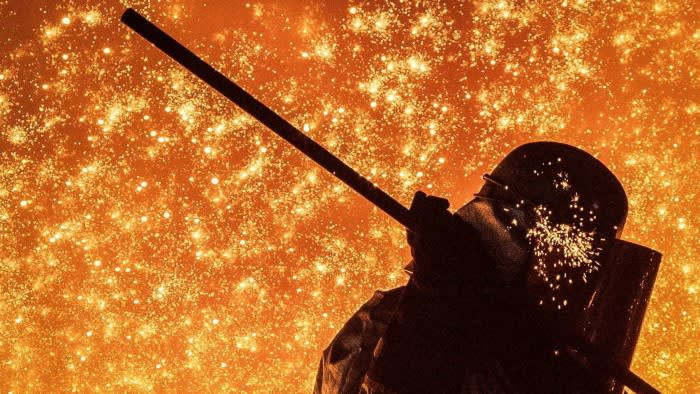
Unlock the Editor’s Digest for free
Roula Khalaf, Editor of the FT, selects her favourite stories in this weekly newsletter.
Tata Steel plans to replace the last two blast furnaces at Britain’s largest steelworks in Port Talbot with electric arc furnaces that melt down scrap to make steel. The loss of up to 2,800 jobs is a hammer blow to the south Wales community. But this is a turning point, too, in UK industrial history. With British Steel set to do the same at its Scunthorpe plant next year, what was once the world’s largest steel producer will become the first major economy with no capacity to make steel from scratch.
Many other countries are vying to make industrial supply chains more resilient as global risks rise. The White House is wary even of Nippon Steel of Japan, a US ally, taking over America’s third-largest steelmaker, US Steel. So will the UK plan one day look foolish?
For the UK’s net zero goals, and Tata’s finances, the move has logic. Tata Steel UK lost almost £1.5mn a day in its most recent quarter. Electric arc furnaces are less labour-intensive, cheaper to run and less carbon-intensive. Port Talbot is the UK’s biggest emitter of carbon dioxide; the revamp will reduce total UK emissions by 1.5 per cent.
The government is contributing £500mn towards the £1.25bn investment. To subsidise a failing industry just to retain jobs and capacity would not be justified. In this case, government investment should be seen as a necessary part of Britain’s green transition. It aims to produce a viable business and safeguard a UK supply source for customers ranging from carmaking to construction, avoiding them being reliant on foreign countries that may not always be allies. It is a way of reducing UK greenhouse gas emissions responsibly, rather than “outsourcing” them to third countries.
What about the national security implications of no longer being able to make “virgin” steel? Port Talbot is not a defence producer, and supporters of Tata’s plan argue it makes UK industry overall more resilient. Blast furnaces use iron ore and coal, which the UK has to import. Electric arc plants use scrap steel, of which Britain has a surplus.
Some experts are sceptical that Port Talbot’s EAFs will be able to match the plant’s steel output today — and say that in a geopolitical crisis or a supply squeeze their production could not be ramped up as blast furnaces can (though that needs imported ore). They also suggest the new plant will struggle to make the most demanding grades of steel from scrap alone, without adding imported pure iron or virgin steel.
A more robust solution might have been to build a “direct reduced iron” plant at Port Talbot, a green technology using natural gas or hydrogen to make iron from ore that is being widely adopted in Germany and Scandinavia. Unions pushed to keep this option open, but the cost was £638mn higher.
Ensuring Tata and British Steel can source the high-quality scrap they need will certainly require a major effort to collect and separate scrap metal more effectively. What is clear from the debate on Port Talbot’s future, moreover, is that such decisions must involve weighing complex, sometimes competing, factors including climate goals, security and industrial strategy. That requires a coherent vision of priorities, and cross-governmental co-ordination — areas in which the UK has not recently excelled.
If the UK wants to maximise its resilience, a joint DRI project merits examination, especially if Britain can develop “green” hydrogen to supply it. T V Narendran, the Tata Steel chief executive, said last week he did not rule out such a plant, if conditions were right. In EU countries, where steelmakers are also switching to electric arc furnaces, often aided by state subsidies, DRI is frequently part of the picture. Even as it plots a path that would, for now, put it out on its own, Britain ought to keep an eye on what the neighbours are doing.
